#320hp
Explore tagged Tumblr posts
Text
youtube
#music#glen campbell#driving tunes#my bloody dads music#been in the country too long me thinks#humour#warwick#brisbane#king of the overtaking#double white lines mean overtake faster#bloody country bumpkins and their 4wds#focus st#320hp#still looking for this fabled bmw
2 notes
·
View notes
Text



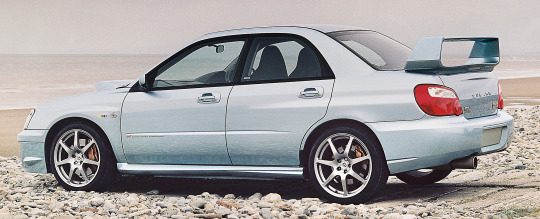
Subaru Impreza WRX STi WR1, 2004, by Prodrive. Prodrive Advanced Technology are best know for their work with Subaru's WRC team. The WR1 was a special edition of 500 cars to celebrate Petter Solberg winning the Driver’s Title in the 2003 World Rally Championship. It was modified by Prodrive to produce 320hp and was equipped with a driver’s control centre-differential (DCCD) that allowed torque distribution between front and rear wheels to be manually selected.
#Prodrive#Subaru Impreza WRX STi WR1#WR1#Subaru Impreza WRX STi#special edition#limited edition#all wheel drive#boxer engine#flat 4#Petter Solberg#Prodrive Advanced Technology#Commemorative Series#WRC
198 notes
·
View notes
Text



Complete North American version of the Supra
ZEEK3.0 i
3-3638-228 ☎03-3638-2228
Again Corporation
The ZEEK3.0i is Japan's first legally tuned car to be certified by the Ministry of Transport, proving its great potential.
Tuning began with the North American spec 320hp Supra. The engine remained standard, but the cam was changed to a high cam. A North American spec metal turbine was installed. A large ZEEK intercooler, a large Earl's oil cooler, a sports cleaner and reinforced radiator hose were also installed.
The CPU has been changed to a ZEEK Active CPU. The main injector is 550cc.
The muffler is a ZEEK titanium tail muffler (outer diameter 130mm). It has a good blowing sound and produces a powerful exhaust sound.
Close.
These specifications result in a maximum output of over 450ps and a top speed of over 300km/h. The lap time at Tsukuba Circuit was a mere 4 minutes and 370 seconds, proving its true potential.
The suspension that supports this high-powered machine is reinforced with a ZEEK twin coil suspension and a 20-stage adjustable shock absorber from Ohlins Pace. It's a hard setting, but it's a flavor that street racers will love.
In addition, the aero parts are original, the meter has been changed to a 300km/h meter, and a STACK boost meter has also been installed.
24 notes
·
View notes
Photo
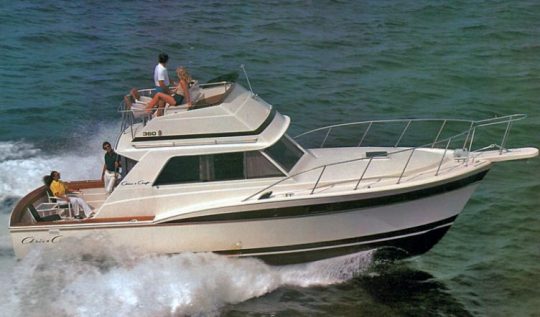

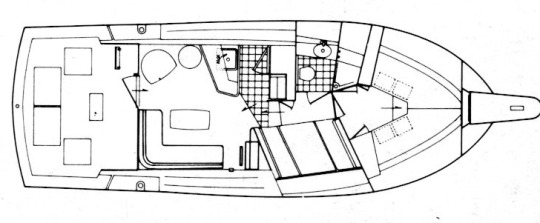
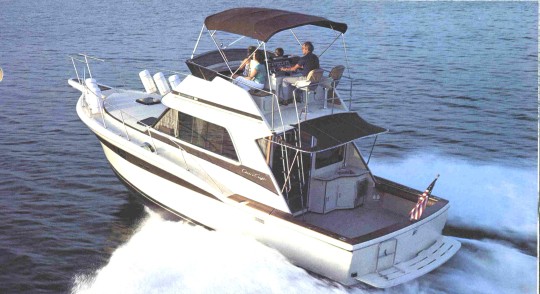

36 Sports Cruiser, 36 Tournament Fisherman, 360 Commander
Model years: 1973 - 1986
Serial numbers: CCHMG, CCFMG and CCHDA
Number of hulls built: Estimate 300
Length x Beam: 36' X 13'Draft / Weight: 36" / 22,600 lbs
Built for many years, both in Florida and Michigan. In the early years the boat had 1-3/8" running gear. In 1981, the running gear was up-graded to 1-1/2" for gas and 1-3/4" for diesel. Major bridge redesign in 1984. A longtime favorite with fishermen and cruisers alike, the Chris Craft 36 Commander (called the 36 Sports Cruiser in 1973–77; 36 Commander in 1978–80; 360 Commander in 1981–86) enjoyed an unusually long production run, a rarity for Chris Craft boats of her era. (Indeed, well-maintained models retained their popularity on the used market for years after the last unit was built.) Introduced in 1973, she came standard with a two-stateroom, galley-up interior until 1984 when a more expansive single-stateroom floorplan with a dinette became standard (a queen bed option was available in the stateroom). Note that most 360s were sold with lower helms. Construction is solid fiberglass, and her low-deadrise hull generates good lift but produces a stiff ride in a chop. The original profile of the Chris Craft 36 remained pretty much the same until 1985 when the deckhouse and flybridge were restyled for a more rakish appearance. An increase in fuel capacity to 400 gallons in 1983 improved the range considerably. Standard 350hp gas engines cruise at 18 knots (mid 20s top). Cat 300hp (or 320hp Cummins) diesels bring the cruising speed up to 22 knots (26–27 knots top).
Sourced from CommanderClub.com and PowerBoat Guide
#Chris-Craft Commander#chriscraftcommander#chris craft#chris-craft#Chriscraft#sport fisherman#sports cruiser#vintage boats#vintage boating
9 notes
·
View notes
Text

Auburn built some of America’s best known and most stylish cars in the late 1920s and 1930s.
1935 Auburn Speedster - 851 Supercharged
The Auburn Automobile Company was founded in Indiana, USA, in 1900. In the following years, business Only after WWI sales were picking up, and in 1926 Errett Lobban Cord integrated Duesenberg Motor Company and Auburn into Duesenberg Inc. The depression caused the company to struggle, although Cord displayed the first american front-wheel-drive car in 1929. The same year saw the appearance of the Duesenberg Model J. Its racing engine delivered 265hp to propel the vehicle to 185km/h (115mph). Further development of the engine with a supercharger resulted in 320hp in 1932. Thus the Duesenberg SJ models were probably the most powerful cars on america’s streets at the time. One of them topped 243km/h (151mph) on the Bonneville Flats in 1935.
0 notes
Video
youtube
2.2 Liter K20 Swapped Into This EF Civic, Making 320hp
1 note
·
View note
Photo

Honda RC115 50cc parallel twin 16.5 hp. That's 320hp/liter!
Motorcycle Monday
1 note
·
View note
Photo

Italian Hot Rod Asscociation 52nd annual car show in Sacramento, CA // 1969 Chevy Camaro rally sport z28
#camaro z28#z28camaro#z28#rally sport#muscle#320hp#horsepower#muscle car#camaro#chevrolet#chevy#chevy camaro#California#auto show#Sacramento#cars#classic car
18 notes
·
View notes
Text










PacMan has come home to be stored whilst the Race Motor is built…..
youtube
#personal#cars#picked up my baby today#store the rolling shell while machine shop does it’s magic#focus st#320hp#looking for 450hp with the stroker#street sleeper#rs tech australia#building stroker motor#v8 supercars machine shop#jack brothers engineering#music#primus
1 note
·
View note
Text
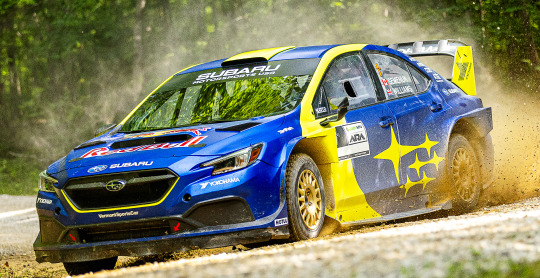
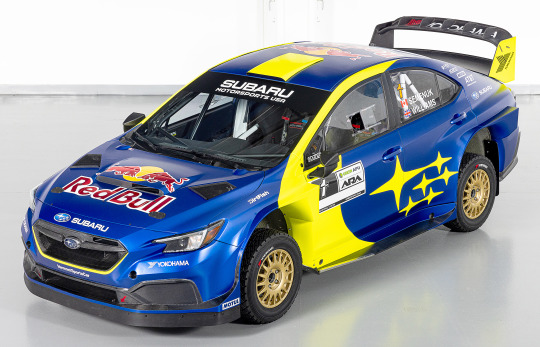
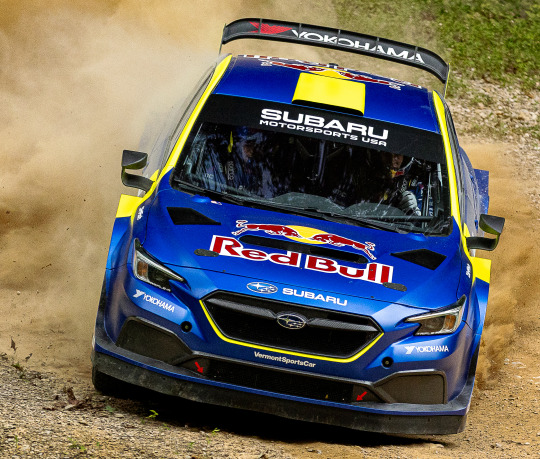


Subaru WRX Rally Car, 2023. Subaru Motorsport have presented their new generation WRX for the 2024 ARA Championship. Subaru Motorsports’ technical partner, Vermont SportsCar have custom-built the car's 2.0-litre flat-4 to produce 320hp driving all 4 wheels via a 6-speed close ratio gearbox. There's a carbon fibre widebody kit and rear spoiler to improve the car's aerodynamics with springs and dampers from R53 Suspension. The WRX will have its competition debut at the Ojibwe Forests Rally in Minnesota on August 24-25 where it will be driven by Brandon Semenuk and co-driver Keaton Williams
#Subaru#Subaru WRX#Subaru WRX Rally Car#2023#rally car#boxer engine#flat 4#turbocharged#new cars#ARA Championship
176 notes
·
View notes
Text



2017-2021 Honda Civic Type R (ljp)
4 2.0 320hp ff
compact
2 notes
·
View notes
Photo

Repost from @petrolicious • #Gablelicious Cat In The Clubhouse: This Modified FIA-Racer Jaguar E-Type Is Perfectly At Home In This Converted Countryside Barn One of the car enthusiast’s perpetual problems is a lack of storage space—whether it’s for half a dozen real cars, hundreds of amassed die-casts, stacks of mags and other automobilia, or just more hard drive space for the digitized aspects of our hobby. Whatever form it takes, it’s safe enough to say that we’ve all fantasized about the “perfect setup,” and it probably looks a lot like this. This is the Clubhouse, a converted farm building nestled in the bucolic hills of Warwickshire. Part of the compound that makes up Henry’s Car Barn—a storage and maintenance facility for some of the coolest cars in England, with three and a half decades of operations under its belt—the Clubhouse is one of the more recent additions to this countryside car mecca, and one of the better realizations of a gentleman racer’s utopic daydreams that I’ve come across in England, or elsewhere. The site is meant for hosting events like car reveals and such, but my visit granted me the chance to shoot one of Henry’s personal cars in the Clubhouse, which I think fits perfectly into its surroundings. Outside of the circuits it was built for—this is a full-on FIA-spec car that gets driven much harder than its tidy paintwork would have you believe—this souped E-Type looks utterly “at home” in these cozy digs. About a decade ago, it was given a thorough restoration and round of modifications under the guidance of Richard Cresswell, a former Jaguar test driver and engineer. Thanks to hotter cams, triple Weber 45 DCOE carbs, a full circuit-spec exhaust, a 10:1 compression ratio, updated Lucas ignition, and a raft of supporting mods, the car now puts out about 320hp—in other words, it’s a formidable feline. And it’s not at all bad looking, either. It’s the kind of car that can be thrashed at Brands Hatch in the morning and parked in front of a posh hotel in the evening See the full gallery by Patrice Minol (@patriceminolphotography) at Petrolicious.com #DriveTastefully https://www.instagram.com/p/CVKQXZnto7J/?utm_medium=tumblr
2 notes
·
View notes
Text
Porsche 911 Through the Years: A History Worth Learning
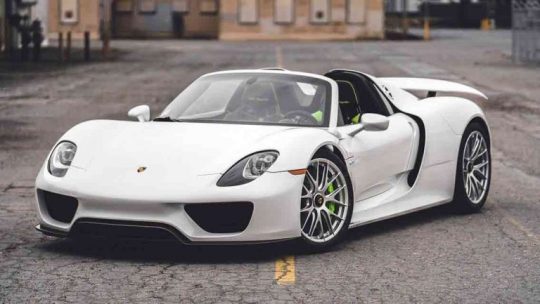
A big part of the 911’s powerful charm is its classic style, especially combined with up-to-date technology.
In contrast with modern-day cars designed to look ‘retro’, the 911 is a classic spirited masterpiece adapted to the twenty-first-century needs. Whether you decide to purchase a new model or a vintage 911, you’ll be making a great choice.
Knowing the history of your Porsche 911 car can increase your appreciation for it -if that’s even possible- and make you feel proud of being the owner of a super-efficient German sports car with a big personality.
Here’s a quick history lesson about this masterpiece.
(1963-1973)
The Porsche 911 was developed as a more powerful, larger, and more comfortable replacement for the 356, the company’s first model. The new car made its public debut at the 1963 Frankfurt Motor Show
Early 911s used two-liter engines with as little as 130bhp. Both engine sizes and power outputs swelled over the next decade. The car had four seats although the rear seats were small, thus it is usually called a 2+2 rather than a four-seater.
Production began in September 1964, with the first 911s exported to the US in February 1965.
In 1966, Porsche introduced the more powerful 911S with a Type 901/02 engine having a power output of 160 PS (120 kW; 160 hp). Forged aluminum alloy wheels from Fuchsfelge, with a 5-spoke design, were offered for the first time.
In August 1967, the A series went into production with dual brake circuits and widened wheels and the previously standard gasoline-burning heater became optional.
The Targa version had a stainless steel-clad roll bar. Its name came from the Targa Florio sports car road race in Sicily, Italy in which Porsche had several victories.
The 110 PS (81 kW; 110 hp) 911T was launched in 1967 with a Type 901/03 engine.
The 130 PS (96 kW; 130 hp) model was renamed the 911L with Type 901/06 engine and ventilated front disc brakes.
The 911R with 901/22 engine had a limited production (20 in all), as this was a lightweight racing version with thin fiberglass reinforced plastic doors, a magnesium crankcase, twin overhead camshafts, and a power output of 210 PS (150 kW; 210 hp).
The B series went into production in August 1968, replacing the 911L model with 911E with fuel injection.
The C series was introduced in August 1969.
From 1970 to 1971 there was a big change, the capacity increased to 2.2 liters for T, E and S (now 123, 153 and 178bhp).
In 1972-73 T, E and S switched to 2.4 liters (128, 163, 187bhp). Horn grilles beneath headlamps turn black for ’72. 207bhp Carrera RS 2.7 homo special lands for ’73, but only in Europe.
(1973-1989)
With the arrival of the G model, there was a discernible difference in styling and tech.
The G-Series debuted in 1973 and was replaced in 1989.
From 1974 to 1976 range simplified to 911 (148bhp) 911 S (173bhp) and Carrera (207bhp), all with 2.7 engines. Carrera switches to 200hp 3.0 for ’76.
From 1977 to 1983 All models except Turbo were replaced by 178bhp SC (boosted to 201bhp in ‘80). The first true Cabrio 911 appeared in late 1982.
Turbocharged 3.0 six’s 256bhp pushes the 911 into supercar territory.
In 1987-88 444hp 959 features a twin-turbo flat-six, with water-cooled heads, computer-controlled chassis, and four-wheel drive. Top speed: 197mph. 961 is 959 modified for competition.
(1989-1994)
In 1989 the 911 underwent a major evolution with the introduction of Type 964.
The 964 model was 85 percent new. The four-wheel-drive arrived for the first time, as did other tech improvements like power steering, ABS brakes, and airbags.
964 RS had new smooth bumpers and a retractable spoiler.
Turbo is back for ’91 with 320hp 33; became 355bhp 3.6 Turbo for ’93 (379hp for 3.6 Turbo S).
(1994-1998)
The 993 was presented just five years after the 964 and is still regarded by many Porsche enthusiasts as the best-looking model.
It was the last 911 with an air-cooled engine.
Curvy shell was a change for 911 design but the real breakthrough was a new multi-link rear suspension, opt four-wheel-drive system. 268bhp from 3.6 boosted to 281bhp.
4 notes
·
View notes
Photo


Gary Fox in 1986, with a, turbocharged Kawasaki Z-1 1428cc engine, The Colani-Egli MRD-1 produced 320hp from its turbocharged, nitrous-breathing engine, and broke the World Land Speed Record for 10km from a standing start, at 170.26mph (272.41kmh); his top speed was 330kmh (198mph). The record was previously held by the Honda ELF, with full Works support of rider Ron Haslam (265.4kmh).
9 notes
·
View notes
Text









1929/35 Duesenberg Model J Dual-Cowl Phaeton
With a production run of under 500, old Hollywood associations, and an over-the-top combination of raw power and luxury, the dual-cowl convertible Duesenberg Phaetons fetch prices at auction well over $1 million.
As the facts listed below indicate, the Duesenberg was at once ahead of its time and behind its time:

The 320hp produced by the supercharged straight-8 racing engine was not equalled in production line luxury cars until the 1990s, making the Model J exponentially faster than almost anything on the road. At the same time, it’s astonishing pricetag of over $200,000 (adjusted) and luxurious fittings were pure Gatsby 1920s, making the car a very hard sell in the dark days of the Great Depression.
The Duesenberg Motor Company sold the chassis and drive train for $9000 in 1929 to owners who wanted custom coachworks. These body types ranged from lordly limousines to boat-tailed speedster convertibles. The most successul in-house body design, the dual-cowl Phaeton, had a “sweep” panel allowing for a distinctive two-tone paint jobs. Concocted by the owners or the coachmakers, these color schemes range from the ridiculous sugary pink and raspberry to the sublime maroon over black. The low windscreens, rakish roofline,and sweeping front fenders gave the dual-cowl Phaeton, a lanky, low-slung look that suited its enormous wheelbase.
Financial problems prevented a redesign of the Duesenberg and by the mid 1930s, the car’s was conspicuously dated in appearance. Combined with the small pool of possible buyers, this effectively doomed the Model J and the company closed in 1937.
25 notes
·
View notes